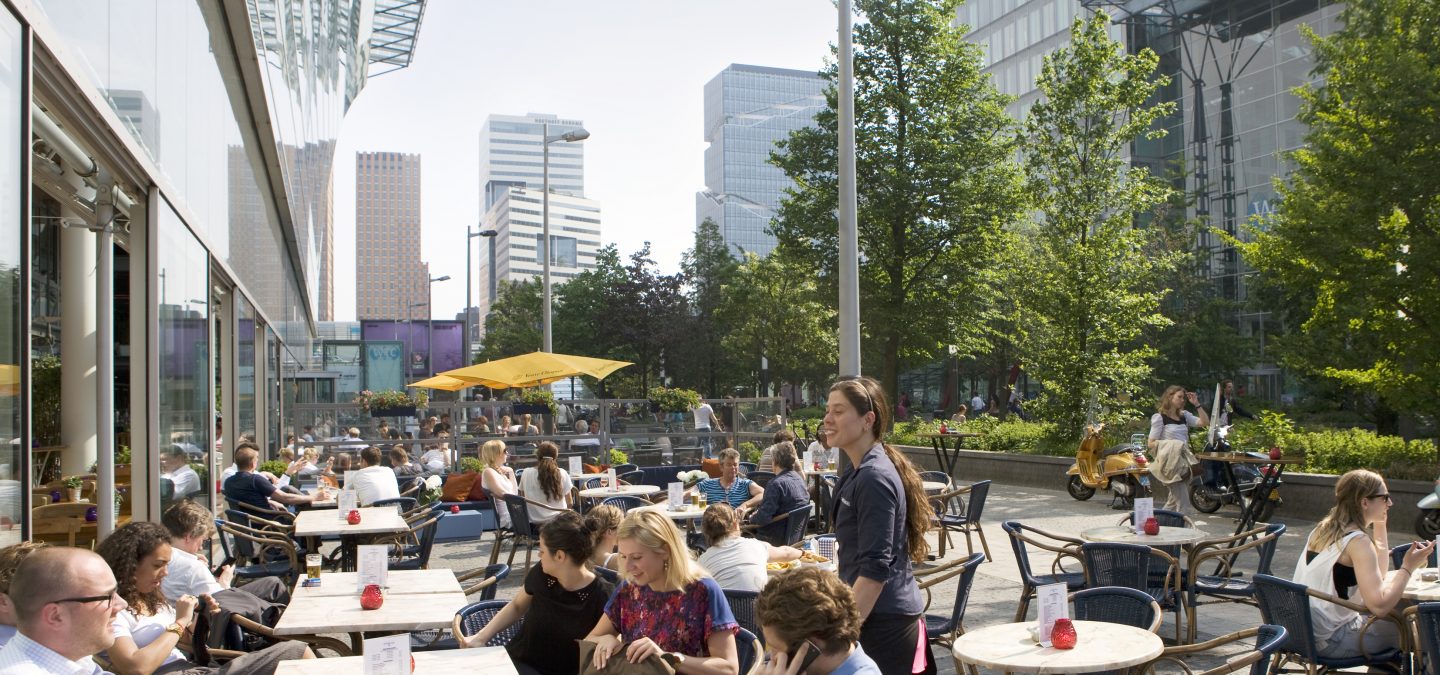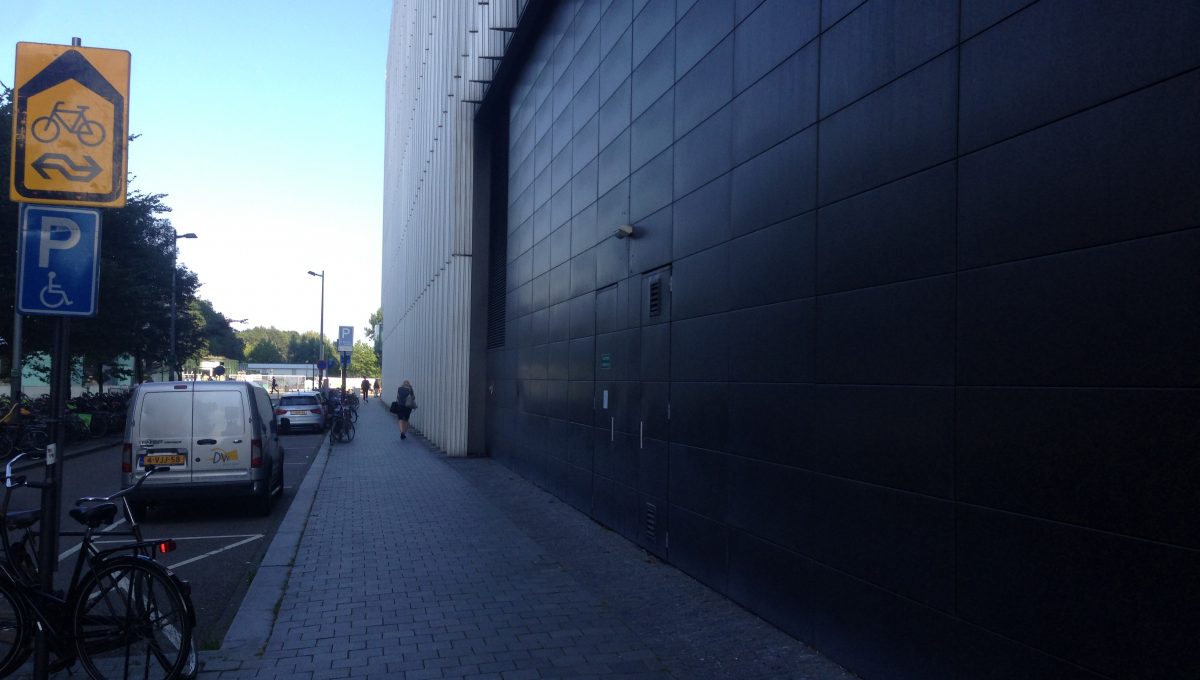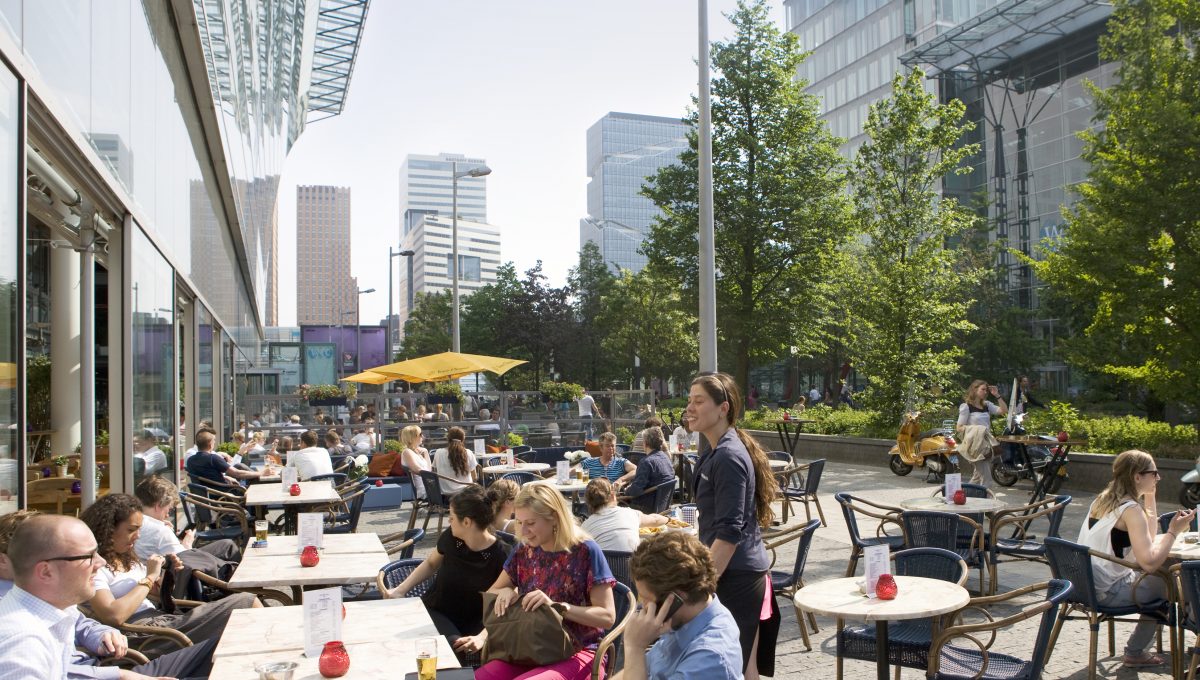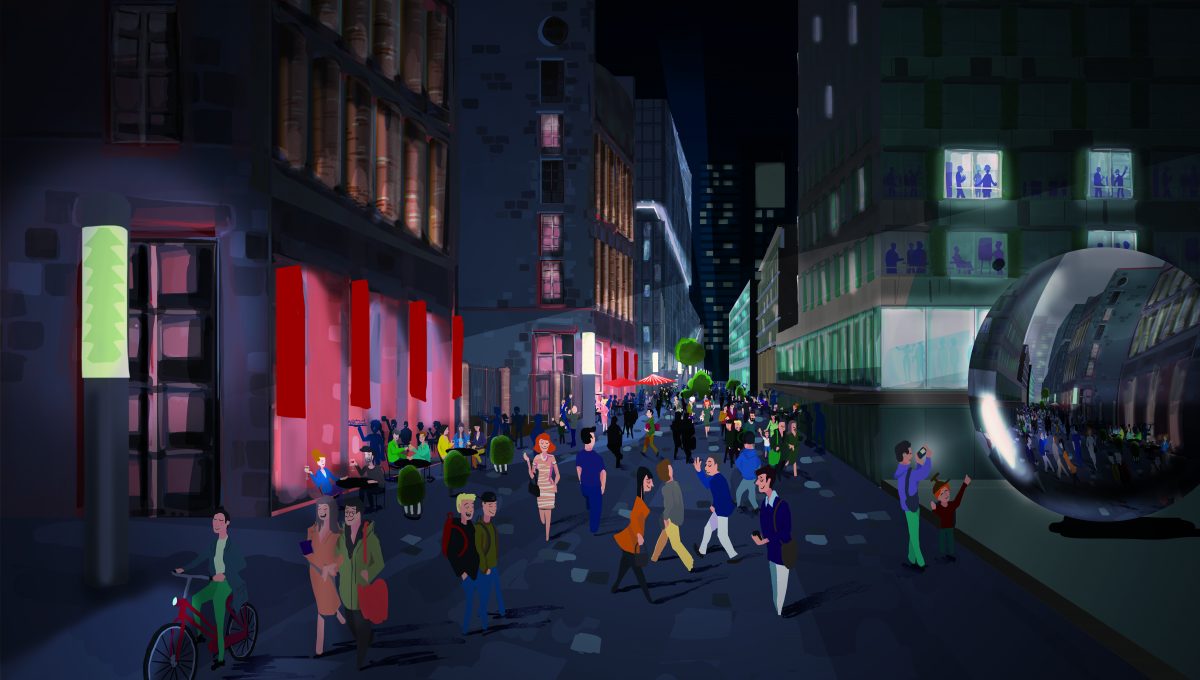
Keep up with our latest news and projects!

We’re meeting three civil servants at the World Trade Center, where Zuidas Amsterdam has its own accommodations. This is no coincidence, because in placemaking you have to be in the place where it all happens, according to Eline Hoogendijk, Zuidas programme manager. Also joining us is chief urban designer Paco Bunnik, who supervises large building projects in Zuidas, and plinth manager Saskia Rill, who works on increasing the area’s liveliness by filling the commercial spaces located in the plinths of the buildings.
How do you turn an area initially perceived as a bleak stone desert into a vibrant, multipurpose urban neighbourhood? ‘By developing a joint strategy in which everyone becomes a partner,’ Rill kicks off the discussion. ‘It started in 2010 with the 15by15 programme, in which we defined 15 goals to be achieved by 2015,’ Hoogendijk explains. ‘Some of them concerned the area’s vibrancy. In those days you couldn’t even buy a sandwich here. We civil servants were also bothered by this lack of amenities.’
The position of plinth manager was invented in those days, the first of its kind in the Netherlands. The reason was the high vacancy rate of the street-level plinths, which gave the area a desolate air, even though the market showed an interest in these premises. Many retailers contacted the municipality because they were interested in a plinth. ‘That seems strange,’ Rill says, ‘because the municipality doesn’t own the properties, but frequently the entrepreneurs had no other way of finding out what exactly was available for rent.
‘That’s because the property owners and real estate agents did not actively promote the plinths,” Bunnik says, ‘but rather concentrated on filling the offices on the upper floors. They considered the plinths less interesting from a commercial point of view. On the other hand, the plinths are extremely important to us; they infuse the area with life and energy.’
‘Many of the empty premises didn’t even display a “for rent” sign,’ Rill recalls. ‘I was tempted to grab a pen and paper and write “for rent” on them. That’s why I decided to make a plinth map: an overview of the premises available for rent, their prices, the number of square metres, and the name of the contact person to be approached.’
In recent years, thanks partly to Rill’s work, the property owners have addressed the plinth issue more actively. The municipality tries to guide the allocation of the plinths as much as possible. ‘In those days,’ Hoogendijk says, ‘we thought we had to attract flagship stores. Our reasoning was that once Louis Vuitton descends on Zuidas, everything else will fall into place. But Zuidas is a high-traffic location without high traffic. Apparently, men prefer buying a suit on PC Hooftstraat accompanied by their partner.’ ‘Dont forget,’ Rill says, ‘that we are located between Beethovenstraat and Gelderlandplein, and that’s stiff competition for us.’
According to Bunnik, the current search concentrates on ‘shops and facilities with great drawing power and a human touch’. Their level has to match the environment. For example, bicycle shops, convenience stores or cheese shops.
How do I get the right shop in the right place? Rill pursued the developers and owners persistently, ‘like a Jehovah’s Witness’, questioning them about their plans. And she actively started to look for suitable shops, which she subsequently matched up with owners. Much of this work is informal and takes place behind the scenes. It consists primarily of talking and liaising with people. Leasehold agreements concluded after a tender has been won now include a clause known as the ‘Saskia Rill provision’, which entails that the municipality has to be involved in the future allocation of the plinth if the stipulations laid down in the tender are not met by the occupant.

 Frontside - © M. van der Heide
Frontside - © M. van der Heide
The main obstacle in filling a plinth vacancy is not the price, as is often assumed. The price is frequently lower than expected. ‘That’s Zuidas’ best kept secret,’ Rill laughs. It’s actually the size of the plinths that’s usually the problem. ‘They’re frequently too large for one user,’ Bunnik explains. ‘You have to split them up. For instance, this could mean creating six front doors in a sixty-metre plinth. That makes everything more small-scale.’ Dealing with foreign owners is often more difficult than with Dutch ones. ‘A German owner doesn’t want an Amsterdam pioneer in the plinth but an established party that signs up for five years,’ Rill says.
Zuidas Amsterdam encourages and embraces initiatives that contribute to a positive perception of the area. For example, a small field in the shade of the Symphony residential tower block was sown with maize, which pigs are allowed to devour on World Animal Day. A circus, a fair and an Oktoberfest have also installed themselves in Zuidas. The ‘waaigat’, or windy hole, as the Zuidas is jokingly referred to, is gradually changing into a mixed quarter where urban planners and placemakers from far and wide come to gain inspiration.
 Zuidas - Naigel Vermeulen ©
Zuidas - Naigel Vermeulen ©
And rightfully so, says Bunnik. ‘It’s unique to find such an urban living room only six minutes from Schiphol Airport. Nowadays, the area is bustling at lunchtime. That’s because we’re giving increasing priority to pedestrians and cyclists. We extended the pedestrian zone all the way to the area’s perimeter; we are broadening the pavements, and we’re reducing car traffic. Mahlerlaan, for example, will become a one-way street to create more space for outdoor cafés and green areas.’
Zuidas Amsterdam is making every effort to increase its quality of living. A case in point are the transformer houses that obscure the view. We’re currently discussing with the owners about the possibility of hiding them, although this isn’t easy for safety reasons.
Asked whether placemaking in Zuidas is a municipal or a joint matter, Bunnik replies that it will still take a bit of ‘pushing and pulling’ to achieve the latter. ‘A critical mass is needed. We’ve just reached the turning point.’ ‘A large number of housing units will be delivered in the autumn of this year,’ Hoogendijk says, ‘which could very well be the extra push we need.’ ‘We have had inquiries from a library, museums and cinemas,’ Bunnik says. Developers are increasingly willing to contribute ideas at the front-end.
Rill has observed that increasingly Zuidas is becoming a normal part of Amsterdam, with complaints about noise pollution and so forth. She has a clear vision of how the area will look in five years’ time: ‘Residents are playing a game of boules on Gershwinplein, a lovely sunny square with a Mediterranean flair with an art market and well-stocked plinths. My position will then have become obsolete because by then everyone will be aware of the important role of the plinths.’
Interested? Join The City At Eye Level and share your story!
Discover moreZuidas (literally the southern axis) is a business district plus residential housing along the A10 South Ring Road in Amsterdam. It was once the largest of six key government projects. The Zuidas covers an area of 268 hectares and is home to the World Trade Center and the headquarters of ABN Amro and AkzoNobel, among others. Developments are still in full swing in this area. Initially, mainly offices were built here, but in recent years a large number of residential housing units have been added. The most important upcoming intervention is the underground relocation of a section of the A10. Moreover, the Amsterdam Zuid Railway Station will be expanded into a high-quality public transport terminal. The Zuidas project should be fully completed by about 2035. The overall direction of this area is in the hands of the Municipality of Amsterdam’s Zuidas department, formerly Dienst Zuidas. The Hello Zuidas Foundation, a collaborative effort of the municipality, businesses, residents and other Zuidas users, is primarily focused on area management. To improve the area’s vibrancy and quality of living, the municipality has initiated the Leef Zuidas programme.